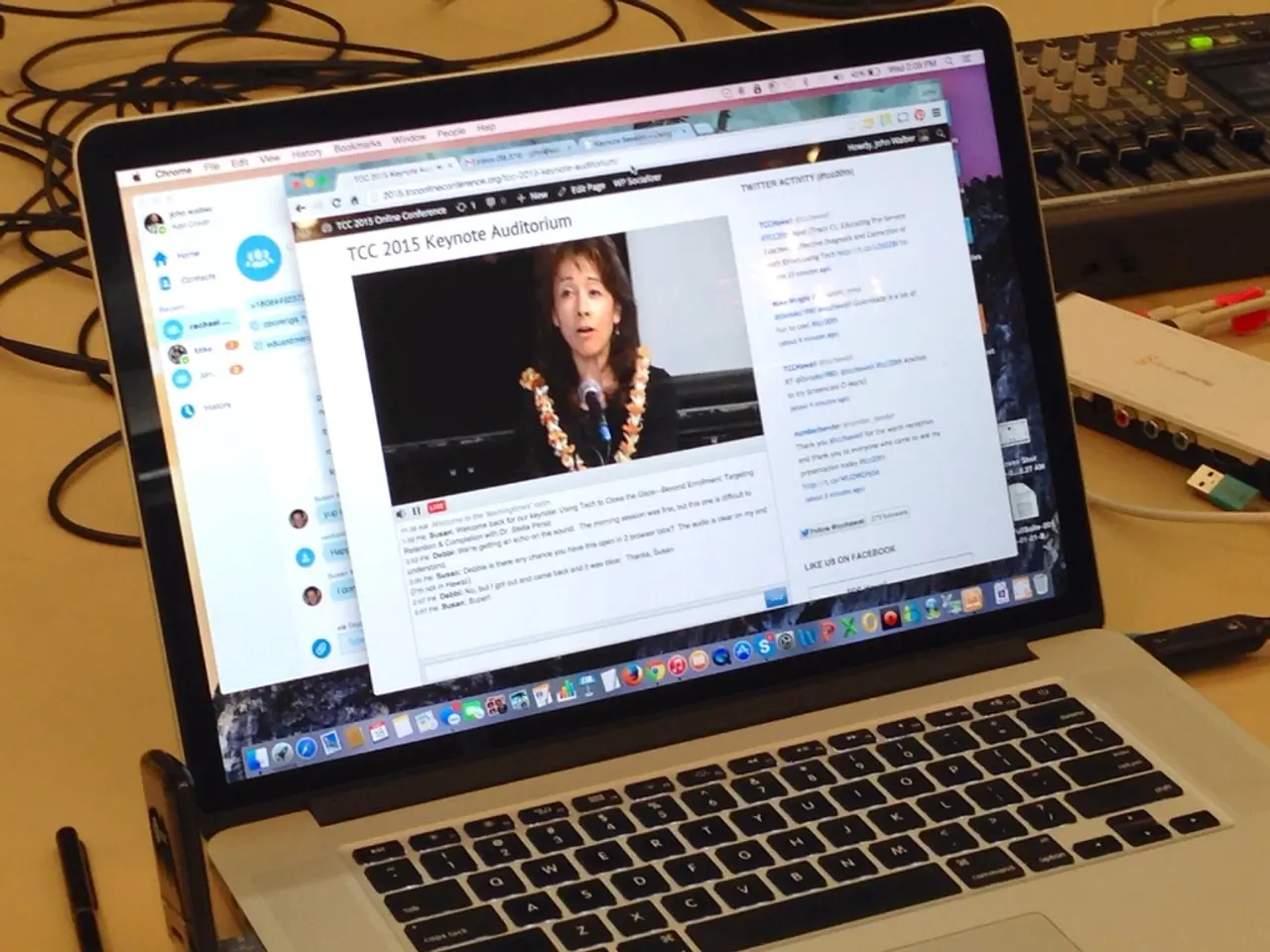Unveiling the gambling sector's $5.2b annual loss to fraud: A closer look at the iGaming sector's fight against fraud in 2025
Approximately half of the European iGaming market experienced a 10% revenue dip due to fraudulent activities in the year 2024.
New research by identity-verification firm Sumsub highlights the European iGaming sector's staggering losses of over $5.2 billion per year due to fraud. According to compliance professionals surveyed, nearly half (47%) of the sector reported losing over 10% of their revenue to fraud in 2024, with another 15% admitting to loses exceeding 20%.
A deep dive into fraud types
The sources of fraud in the iGaming sector predominantly stem from digital fraud, particularly during customer onboarding. Identity fraud (65%), money laundering (65%), and bonus abuse (64%) are the leading offenders. However, today's fraudsters are leveraging advanced technologies such as deepfakes to create nearly undetectable false identification documents. As a result, 78% of compliance professionals reported a rise in AI-generated fakes in 2024.
Battle strategies for the iGaming sector
In the face of these emerging threats, the iGaming sector must adapt its fraud prevention tactics to stay ahead of the game. Sumsub recommends replacing labor-intensive manual checks with automated monitoring as the most beneficial approach. Traditional manual checks only block around 54% of fraud attempts, with approximately 31% of fraud professionals dedicating over 40 hours a month to fraud prevention.
Kris Galloway, Head of iGaming product at Sumsub, stresses the need for a multi-layered defense strategy, with security measures in place throughout the entire user journey, from registration to withdrawals. Here's a breakdown of effective tactics to counteract deepfake-driven threats in the iGaming sector:
- AI-Driven Behavioral Analysis: Utilize machine learning models to detect patterns of fraudulent activities like rapid account creation, bonus claims, or withdrawal attempts. These tools can flag synthetic identities and deepfake-forged documents by analyzing behavioral biometrics (typing speed, mouse movements) and cross-referencing device fingerprints.
- Enhanced KYC & Identity Verification: Implement strict KYC checks with liveness detection to authenticate user identities and combat deepfakes. Veriff’s real-time biometric analysis, for instance, validates selfies against government IDs while detecting AI-generated faces or reused photos. Geolocation validation and IP scoring also help prevent VPN-based spoofing.
- Real-Time Monitoring & Fraud Scoring: Monitor traffic quality metrics to identify suspicious affiliates. Tools like Scaleo provide IP fraud scores based on traffic legitimacy, while SEON recommends tracking device emulators and behavioral anomalies across sessions.
- Regulatory Alignment & Cross-Platform Collaboration: Adopt AML-compliant frameworks that integrate fraud prevention with jurisdictional gambling laws. Sumsub’s guidelines for 2025 emphasize combining AI analytics with updated regulatory requirements to prevent money laundering through bonus abuse or account takeovers.
- Proactive Threat Intelligence: Invest in predictive analytics to anticipate evolving scams. Group-IB’s AWS-powered tools detect emerging threats by identifying deepfake video verification bypasses, while SEON’s fraud outlook stresses device fingerprinting and transaction linkage to expose multi-accounting networks.
In addition to these strategies, iGaming operators must consider urgent tactical adjustments, such as banning bonus stacking, automating chargeback disputes, and partnering with cybersecurity experts to stay updated on deepfake countermeasures.
On a closer analysis, the iGaming sector loss to fraud is approximately half of its total annual revenue, with most of the fraud stemming from digital means, particularly during customer onboarding. Identity fraud, money laundering, and bonus abuse are the leading fraud types, with fraudsters now using advanced technologies like deepfakes to create almost undetectable fake identification documents. To combat this, the iGaming sector should implement a multi-layered defense strategy that includes AI-driven behavioral analysis, enhanced KYC and identity verification, real-time monitoring and fraud scoring, regulatory alignment, cross-platform collaboration, and proactive threat intelligence. Additionally, iGaming operators may need to consider urgent tactical adjustments such as banning bonus stacking and partnering with cybersecurity experts to stay updated on deepfake countermeasures. This approach, according to Sumsub, will help significantly reduce the sector's financial losses due to fraud.










